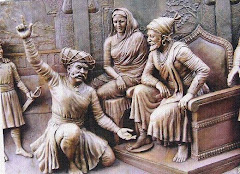!!Jay Vishwakarma bhagawan!!Jay maharashtra!!Jay Hind!!
HEART OF THE MATTER
As the world marks World Heart Day on Sunday, heart diseases and stroke continue to kill 17.5 million people annually. But simple steps like reducing one’s salt intake slightly could save millions of lives, says Umesh Isalkar
Heart diseases and stroke are the world’s number one killers, claiming 17.5 million lives every year. Doctors say that simply reducing one’s salt intake by half a teaspoon daily could help reduce the risk from these diseases, saving millions of lives. A mere three-gram reduction in every person’s consumption of salt would result in an over 20 per cent reduction in deaths from stroke and an over 15 per cent fall in deaths from heart diseases. Risk factors for heart diseases and stroke include high blood pressure, high cholesterol and glucose levels, smoking, inadequate intake of fruits and vegetables, overweight, obesity and physical inactivity. Together, these factors account for around 80 per cent of deaths from heart diseases and stroke. “High blood pressure or hypertension, however, is the single biggest risk factor for heart disease and stroke and currently affects more than a billion people worldwide,” said leading cardiologist Shirish Hiremath, who is the director of the Cathlab at Ruby Hall Clinic. It is estimated that more than 1.5 billion people, or nearly one in three adults over the age of 25, will suffer from high blood pressure by the year 2025. Also, according to the latest study published in leading medical journal ‘The Lancet’, by 2010, India will be home to 60 per cent of the world’s heart patients, Hiremath said. According to Avinash Bhondwe, president of the city chapter of the Indian Medical Association, it is possible to develop high blood pressure at any age and there are no obvious symptoms. The only way to know if you are at risk is through a medical check-up. “By finding out your level of risk, you are taking a simple but significant step towards living a longer and better life,” Bhondwe stated. High blood pressure is usually controllable with lifestyle changes and medication, he added. There are several factors which increase the risk of high blood pressure, such as excessive salt consumption. Cardiologist Shireesh Sathe, who is also the president of the Pune chapter of the Cardiology Society of India, said avoiding foods high in salt (including restaurant and processed food which may be high in salt) and refraining from adding salt could potentially reduce its consumption by three grams a day. “This year, particular emphasis the World Heart Day Foundation is placing emphasis on high blood pressure, or hypertension, which is the most significant risk factor for stroke and an important one for heart disease,” stated Bhondwe. The hidden factor The World Health Organisation recommends a maximum quantity of 5 grams of salt a day, which is about a teaspoonful. This is not a large amount, especially when you consider that 75 per cent of the salt we eat is already present in the food we buy. Therefore, before you assume that you don’t eat too much salt, take a look at what you are buying, as well as how much salt you use at home. Ways to reduce salt consumption t Opt for healthier breakfast cereals, such as puffed wheat, wheat biscuits or muesli with no added salt t Snack on plain popcorn or unsalted nuts and seeds, instead of potato chips. t Go easy with tomato ketchup, soya sauce, mustard, pickles and mayonnaise as these can all be high in salt t When you have a salad, use only as much dressing as you need. Some dressings can be high in salt One of the simplest ways to cut down on salt is to compare foods and choose those which have a lower salt content whenever you can. A quick way to tell if a food is high in salt is by looking at the nutritional information on the label: t High is more than 1.5 grams salt per 100 grams (or 0.6 grams sodium) t Low is 0.3 grams salt or less per 100 grams (or 0.1 grams sodium) (Compiled from www.worldheartfederation.org)





















